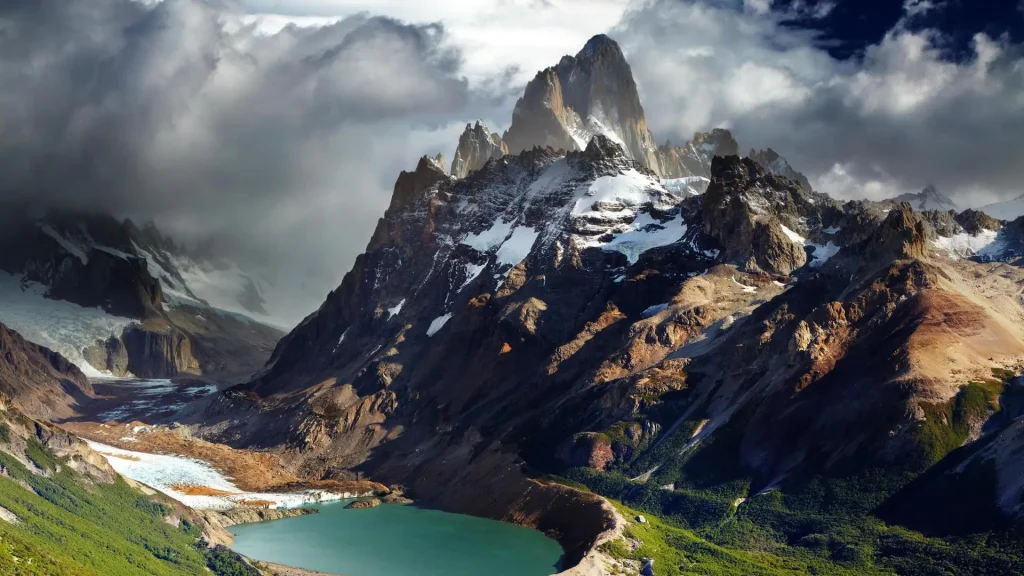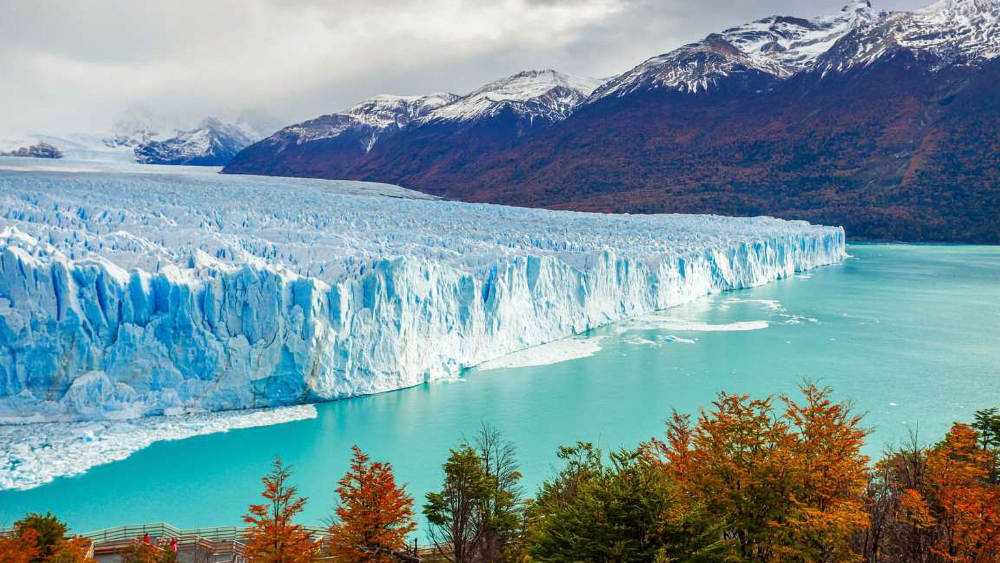Explore the wonders of Patagonia! From its breathtaking landscapes to rich history, find out about top attractions, travel tips, costs, and more.
Welcome to the ultimate guide to Patagonia! Nestled at the southern tip of South America, Patagonia is a land of awe-inspiring beauty, rugged terrain, and diverse wildlife. Whether you’re an adventurer seeking remote landscapes or a history enthusiast delving into ancient cultures, Patagonia offers something for everyone. ..
What Are the Places of Patagonia?
The Magnificent Landscapes
Patagonia is renowned for its diverse landscapes that range from towering Andean mountains to expansive grasslands and pristine glacial lakes. Key highlights include:
- Torres del Paine National Park: Famous for its jagged peaks and azure lakes, this park offers unparalleled trekking and wildlife viewing opportunities.
- Perito Moreno Glacier: Witness the awe-inspiring spectacle of ice calving into Lake Argentino, a UNESCO World Heritage site.
- Mount Fitz Roy: A challenging climb for mountaineers, offering stunning panoramic views of the Patagonian wilderness.
Coastal Marvels
Patagonia’s coastline boasts dramatic cliffs, secluded beaches, and vibrant marine life. Don’t miss:
- Valdes Peninsula: A UNESCO site teeming with marine mammals like whales, sea lions, and penguins.
- Puerto Deseado: Known for its unique rock formations and birdwatching opportunities.

History of Patagonia: Unveiling the Past
Patagonia’s history is as diverse and rugged as its terrain. Originally inhabited by indigenous peoples such as the Tehuelche and Mapuche, it later became a focal point of European exploration and colonization. Key historical milestones include:
- Indigenous Cultures: Explore the rich traditions and lifestyles of the native Tehuelche people, who thrived in Patagonia for centuries.
- European Exploration: From Ferdinand Magellan’s voyage in 1520 to later expeditions by Darwin and Fitz Roy, European explorers mapped and documented Patagonia’s geography.
- Colonial Influence: The establishment of sheep ranches by European settlers in the late 19th century transformed Patagonia’s economy and culture.
Visit Cost: Planning Your Budget
Planning a trip to Patagonia requires careful consideration of costs. Here’s a breakdown of essential expenses:
- Accommodation: Options range from budget hostels to luxury lodges, with prices varying by location and season.
- Transportation: Flights to major hubs like El Calafate or Punta Arenas can be pricey, while buses offer a more economical option for regional travel.
- Activities: Excursions to national parks and guided tours are popular but can add up quickly. Budget for park entrance fees and tour costs accordingly.
Nearby Locations: Exploring Beyond Patagonia
While Patagonia itself is vast and diverse, nearby regions offer additional exploration opportunities:
- Tierra del Fuego: Known as the “End of the World,” this archipelago offers fjords, glaciers, and unique wildlife experiences.
- Chilean Lake District: A scenic area north of Patagonia, renowned for its volcanic landscapes, hot springs, and picturesque lakeside towns.

Things to Do in Patagonia: Adventure Awaits!
Outdoor Activities
Patagonia is a playground for outdoor enthusiasts, offering activities such as:
- Hiking and Trekking: Explore trails ranging from easy walks to challenging multi-day hikes in Torres del Paine and Los Glaciares National Parks.
- Skiing and Snowboarding: During winter months, hit the slopes in resorts like Cerro Castor in Tierra del Fuego or Cerro Catedral near Bariloche.
Wildlife Encounters
- Whale Watching: Visit Puerto Madryn for a chance to see southern right whales up close during their migration season.
- Birdwatching: Patagonia is home to diverse bird species, including the majestic Andean condor and colorful parrots.
Ticket Price: Planning Your Travel
Ticket prices to Patagonia vary depending on your departure city, travel dates, and airline choice. It’s advisable to book flights well in advance, especially during peak tourist seasons. Expect higher fares during the southern hemisphere’s summer (December to February).
Best Time to Visit Patagonia: Seasonal Highlights
Patagonia experiences distinct seasons, each offering unique experiences:
- Summer (December – February): Ideal for trekking and wildlife viewing, with longer daylight hours and milder temperatures.
- Autumn (March – May): Witness spectacular foliage as forests turn golden, and enjoy fewer crowds.
- Winter (June – August): Perfect for skiing and snow sports enthusiasts, although many lodges and attractions operate on a reduced schedule.
- Spring (September – November): Wildflowers bloom across the region, and wildlife becomes more active, making it a great time for photography and hiking.
Famous Food: Culinary Delights of Patagonia
Explore Patagonia’s unique gastronomy, influenced by its natural resources and immigrant cultures:
- Asado: Traditional Argentine barbecue featuring grilled meats like lamb, beef, and chorizo.
- Centolla: King crab harvested from the waters around Tierra del Fuego, known for its sweet and tender flesh.
- Calafate Berry: Found in desserts and liqueurs, this indigenous berry is said to bring good luck to those who taste it.
Nearest Airport: Gateway to Patagonia
The main airports serving Patagonia include:
- El Calafate International Airport (FTE): Located near Los Glaciares National Park in Argentina, it offers domestic and limited international flights.
- Punta Arenas Airport (PUQ): Serving southern Chile, it provides access to Torres del Paine and other Chilean Patagonian destinations.

Travel Challenges: What to Prepare For
Traveling in Patagonia presents certain challenges that visitors should be aware of:
- Weather Variability: Patagonia is known for its unpredictable weather, which can range from sunny to stormy within hours. Pack accordingly with layers and waterproof gear.
- Remote Locations: Some areas, especially in rural Patagonia, have limited infrastructure and services. Plan for longer travel times and limited amenities.
- Language Barrier: While Spanish is widely spoken, English proficiency may vary outside major tourist hubs. Consider learning basic Spanish phrases for easier communication.
Travel Safety: Tips for a Secure Journey
Patagonia is generally a safe destination for travelers, but it’s wise to take precautions:
- Health Precautions: Ensure vaccinations are up-to-date, particularly for remote areas where medical facilities may be limited.
- Wildlife Awareness: Respect wildlife and follow park guidelines to avoid encounters with potentially dangerous animals like pumas.
- Personal Safety: Use reputable tour operators and avoid isolated areas, especially when hiking or exploring alone.
Conclusion
In conclusion, Patagonia captivates visitors with its untamed landscapes, rich history, and diverse wildlife. Whether you’re trekking through the Andes, marveling at glaciers, or savoring local cuisine, this region promises unforgettable experiences for adventurers of all kinds.
FAQs about Patagonia
Q: What are the must-visit places in Patagonia?
A: Don’t miss Torres del Paine, Perito Moreno Glacier, and Valdes Peninsula for their natural beauty and wildlife.
Q: When is the best time to visit Patagonia?
A: It depends on your interests; summer is great for trekking, while winter offers skiing opportunities.
Q: What is the food like in Patagonia?
A: Try traditional dishes like asado and centolla for a taste of local flavors.
Q: Are there any travel challenges in Patagonia?
A: Yes, be prepared for variable weather, remote locations, and potential language barriers.
Q: Is Patagonia safe for travelers?
A: Generally, yes, but it’s important to take standard travel precautions and respect wildlife.
This comprehensive guide aims to equip you with everything you need to know about exploring Patagonia, ensuring your journey is as memorable as it is enriching. Happy travels!
